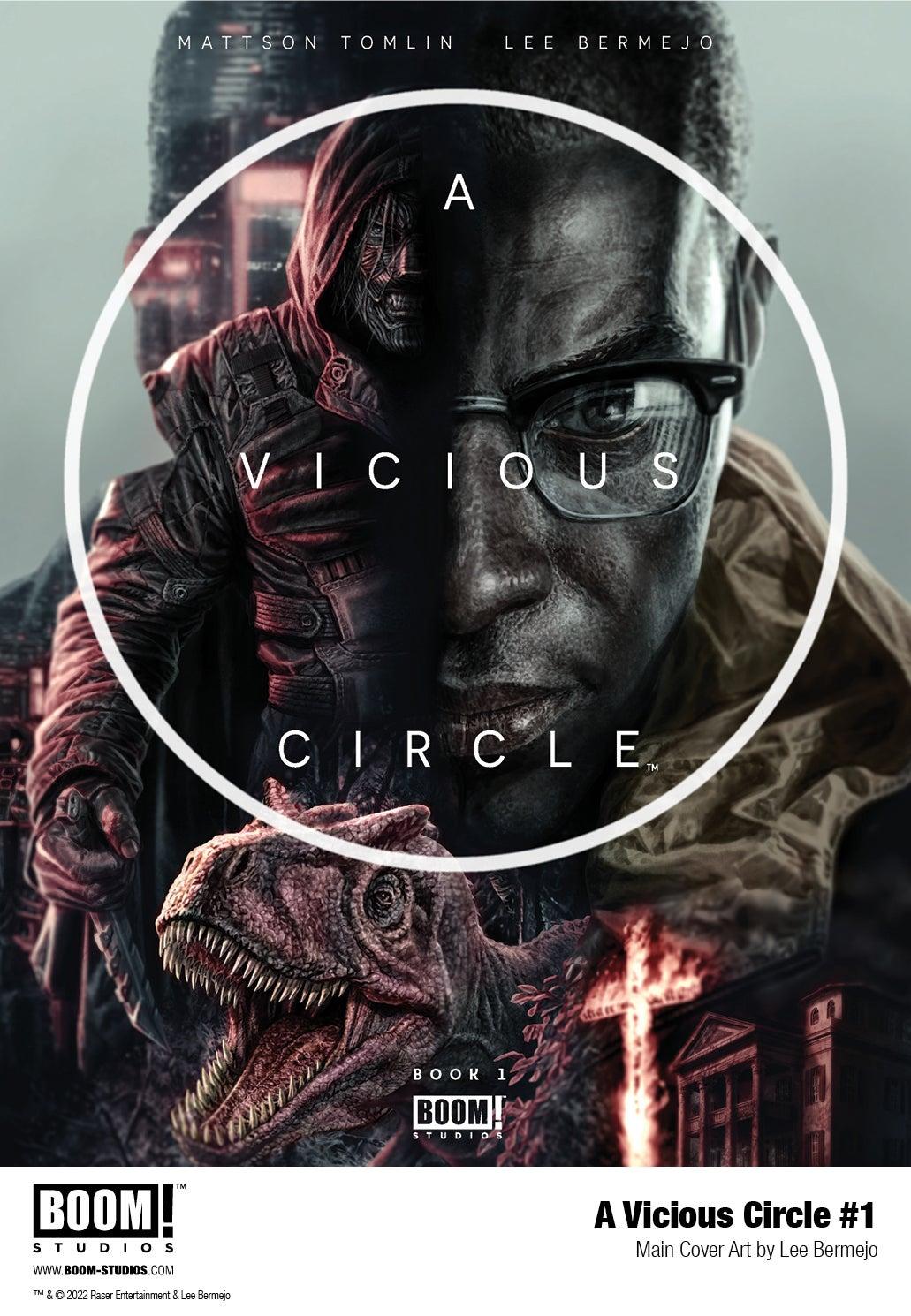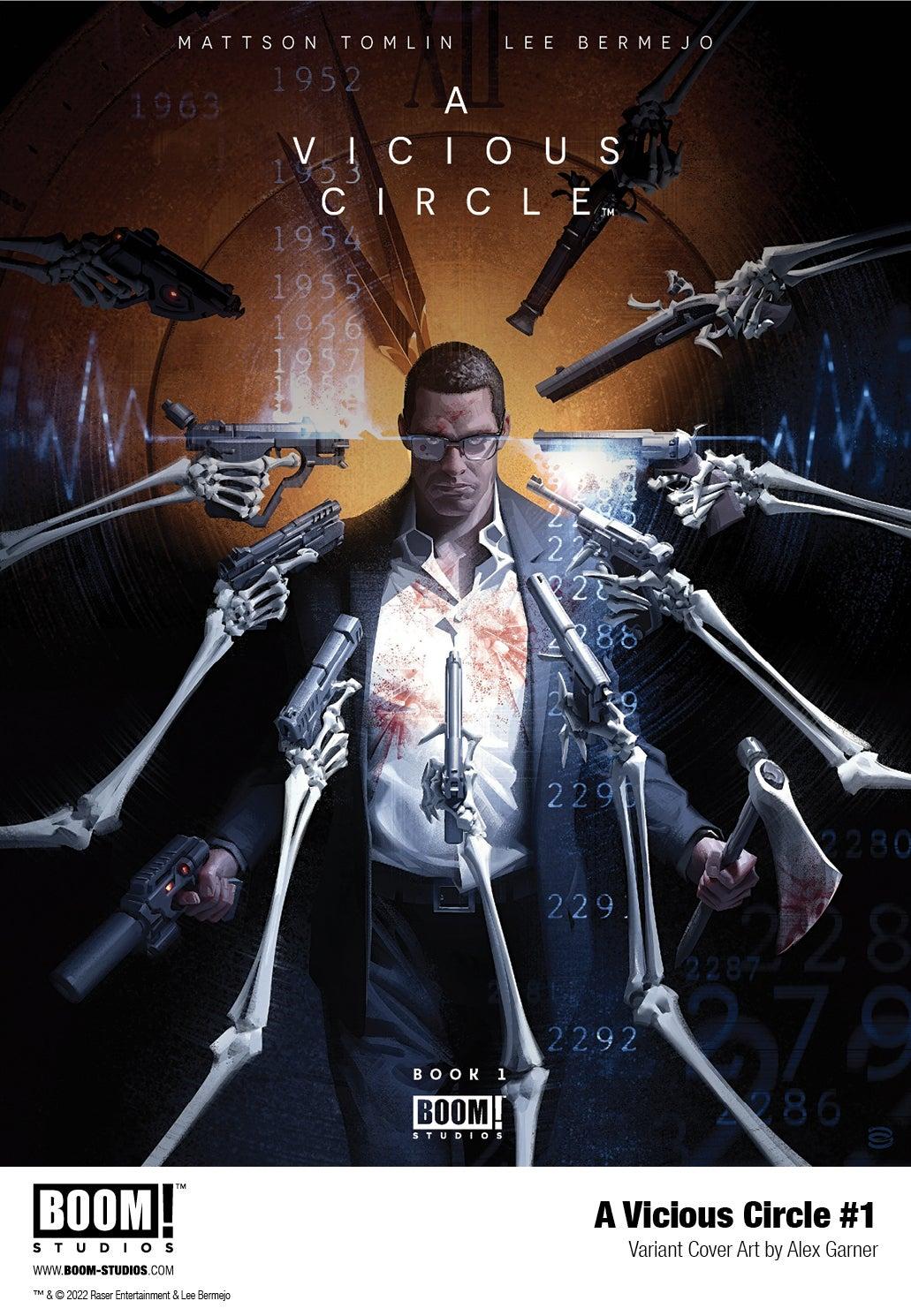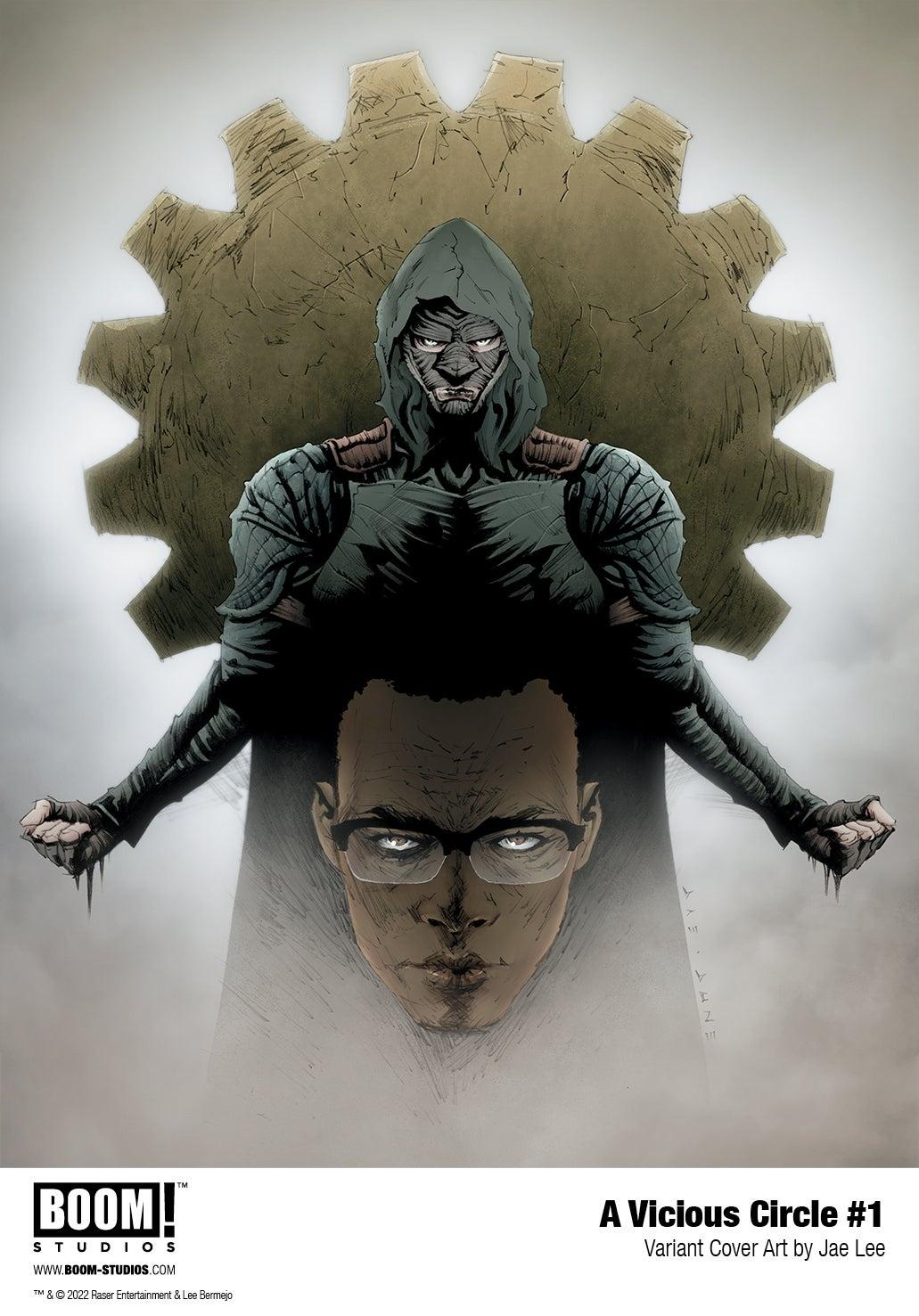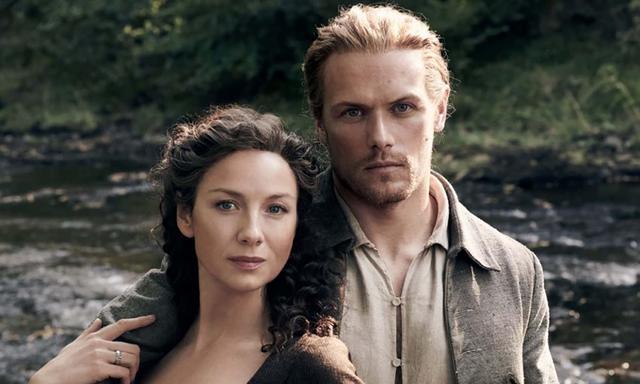If you click on a link and make a purchase we may receive a small commission. Read our editorial policy.
The Batman movie co-writer Mattson Tomlin teams with iconic Joker artist Lee Bermejo for their own story, A Vicious Circle
Mattson Tomlin & Lee Bermejo make A Vicious Circle in time-travel thriller for BOOM! Studios

Two assassins. Bound to each other. Unbound by time.

That’s the basic premise of BOOM! Studios’ latest prestige, oversized action thriller comic A Vicious Circle. A three part miniseries, A Vicious Circle follows Shawn and Ferris, two assassins that share a bitter rivalry and chronological curse. Whenever one of them takes a life, both warriors are ripped from their current present and flung somewhere else in time.
The series is written by Mattson Tomlin, the mind behind comics such as Batman: The Imposter and screenwriter of the upcoming sequel to The Batman. The art is by DC staple Lee Bermejo, known for his work on Joker and Dear Detective. Ahead of the first issue’s release on December 14, Popverse sat down with the A Vicious Circle creators to talk about their time-travel thriller.
Read on to hear what they had to say.
Popverse: Lee, you use a different style of art every time the main characters jump to a different point in history. Can you tell us about building those styles? Did you use any influences, and how did you know which style was right for its respective period?
Lee Bermejo: Well, a lot of it was Mattson. He and I talked from the get-go; we talk about sequences and say like, ‘I kind of see it like this, maybe a watercolor effect or something.’ So we worked it out together. Some of the sequences we worked out ahead of time.
We knew we wanted the book to start off in this style that’s Leave It to Beaver shot by Bong Joon Ho. It’s very crouched black and white film footage footage look. You need that to heavily contrast with this crazy time jump to where we go after that. You need it to completely look different. Mattson describes it as Wizard of Oz 2022, which I think is awesome because it's like this, you know, that Wizard of Oz, black and white to color jump.
But yeah, each sequence has to look different than the previous sequence, but also has to make sure that it really punches readers in the face, you know what I mean? Because the high concept is what it is with the time travel happening when people get killed. It has to reflect the responsibility of that. The world changes. The world really changes when that happens.
Yeah, absolutely. And Mattson, is that on your mind as you're writing the sequences? Are you thinking about where in time is most different from the current time the characters are in?
Mattson Tomlin: Definitely. You want to have contrast. It would be confusing to go from a future that doesn't exist to another future that doesn't exist, because you might not know that it's a different future. And then suddenly they're only teleporting. When I think about it like that, it's like there is a rhythm that is actually really important to keep people from getting confused. Boiling it down to what a comic is, which is these static images to really convey information.

The other part for me is just making sure that our characters are always a little off balance, that they've got an arm tied behind their back. I’m always keeping them at a disadvantage, so the second that they're in one time period and and start to go, ‘Okay, I'm equipped and I'm ready to handle this,’ I put them somewhere where they're suddenly going to be totally fucked all over again. That’s the way to keep the tension and keep the story propulsive and moving.
Popverse: On the subject of those characters; we know we know a little bit about who the characters are, but we don’t know why they’re bound to each other. Without spoiling too much, can you give us a hint at that?
Tomlin: The first book tells us that there's this organization called The Kang Touring Company and that they’ve created this machine. And that machine is important. We don't know why, but it curses these two guys that are from some place and some time that we don't know. When we start the book, we're starting in the middle of the story. This isn't day one. This guy, he's got this other guy tied up in his basement for what looks like a long time.
The question you're asking is a question that is going to get answered in the book, too. We're going to get to the point where we're really going to know who these guys are, where they come from, why this started, what the fuck is going on. But right now, it is really all about just getting you to care about this one guy and introducing you to the rules.
Gotcha. Well in A Vicious Circle #1, one of my favorite parts was the way that the movement in time was conveyed. Lee, can you talk about coming up with that?

Bermejo: That's something I can’t take credit for. It was absolutely in the script, conveyed exactly like it is in the book, which is that you stay on these characters and bam, bam, bam, you move in time. The camera's behind this guy and you're bolting from one time period to another.
And I just thought that was ingenious, that we haven't seen that before. So yeah, that was there in the script and my job was just to try to make sure it was clear for readers with the style differences and with what we eventually landed on as being the look for the actual moment where they were they, you know, jump in time. Not much more to it than that.
Great. Alright, let’s talk about the format of this book for a minute. It is oversized and each issue is 48 pages. Mattson, did that change the story in your head, or did you walk into this saying, ‘this is how we have to do it’?
Tomlin: I definitely walked into it saying, ‘around 50 pages.’ I’m still very new to comics, and so I knew that sometimes it's 22 pages, sometimes it's 24, though that's changed over time. And so I was like, I don't quite know what the standards are these days, but I thought that it’s something that's around 50 pages. To tell a story like this in 22 pages, it starts to get much more episodic.
Some of my favorite comics are Brian Michael Bendis’s and Alex Maleev’s Daredevil run. Part of why I love that arc so much is these moments that are quiet and spaced out. For a book that is so high octane where the characters are moving to be able to have that space where you can stop, you can breathe, you can have a moment to reflect… all of that felt important.
Then we were always going to do three [issues]. Structurally, that makes sense for me because I come from the film world, so I'm thinking in terms of Act One, Act Two, Act Three. That makes sense to me in terms of Book One, Book Two, Book Three, and what has to happen in those books so that I don't accidentally write something that's just a total mess that nobody can follow. A lot of that is just like my own comfort; this is a format that I can understand.
Understood. Alright, this last question is for both of you. Forgive me if I'm assuming here, but the title of this book is kind of a statement on violence, on how people get hurt, and that means they hurt people. A vicious circle. What, your opinions, is the end of that vicious circle that is violence? How is that broken? How, if at all, does this book address it?
Bermejo: I mean, I don't want to tell you how our vicious circle ends. But what I can say is that in a world where you have a lot of action and violence in video games and film and comics and stuff like that, it doesn't feel like a lot of the violence has any repercussions. One of the early things we talked about is that, with this particular story, if someone dies, the entire world changes. I feel like that is such a quietly cool and deep way of looking at what this is, you know, without beating people over the head or preaching to them. It's there if they want to find it. And that's kind of the philosophical underlining of this thing.
Tomlin: Totally the same. The book is about consequence and it's about cause and effect. The characters are going to be brought to places where they’re being taken out of where they know. You see it a little bit in that first issue, when when Shawn is taken out of and away from his family. You know, they don't have control over when or where. And that's pain. His life is forever changed by what this guy did.
You're going to feel those effects through all three books in ways that are going to keep on Rubik's Cube-ing. In every single issue, your relationship to time and to those kills are going to be drastically affected and it's going to continue to compound. Let’s check in at the end of Book Three about whether or not I fulfilled that promise, but that's definitely the goal.
I have a lot of faith that that promise will be fulfilled.
Tomlin: I'm really psyched for this book to come out. I hope people like it.
I’m sure they will.
You can find this and many more comics at your local comic shop. But need help getting there? Here's our guide to comic shops.
Follow Popverse for upcoming event coverage and news
Find out how we conduct our review by reading our review policy
Let Popverse be your tour guide through the wilderness of pop culture
Sign in and let us help you find your new favorite thing.
















Comments
Want to join the discussion? Please activate your account first.
Visit Reedpop ID if you need to resend the confirmation email.